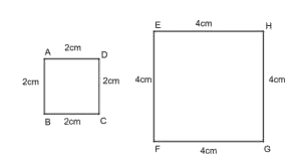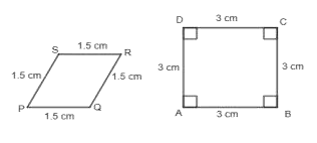Maths Class 10 Chapter 6 Questions and Answers - Free PDF Download
NCERT Solutions For Class 10 Maths Chapter 6 Triangles Exercise 6.1 - 2025-26
FAQs on NCERT Solutions For Class 10 Maths Chapter 6 Triangles Exercise 6.1 - 2025-26
1. What topics are covered in the NCERT Solutions for Class 10 Maths Chapter 6, Triangles?
The solutions cover all concepts as per the CBSE 2025-26 syllabus, focusing on:
- The concept of similar figures and the conditions for the similarity of triangles.
- The statement and proof of the Basic Proportionality Theorem (BPT) or Thales' Theorem.
- Step-by-step solutions for all questions in exercises 6.1 to 6.5, applying similarity criteria like AAA, SSS, and SAS.
- Guidance on solving problems related to ratios of areas of similar triangles and Pythagoras' Theorem.
2. How do these NCERT Solutions explain the application of the Basic Proportionality Theorem (BPT)?
The solutions demonstrate the correct method to apply BPT by:
- Identifying a line parallel to one side of a triangle that intersects the other two sides.
- Setting up the correct ratio: If DE || BC in ΔABC, the solutions show how to use the formula AD/DB = AE/EC.
- Substituting the given values methodically to find the length of an unknown side.
- Providing clear reasons for each step in proofs involving the theorem.
3. How should I write a geometry proof for the Triangles chapter to get full marks in the board exam?
The NCERT Solutions for Chapter 6 model the ideal way to write proofs. Key steps include:
- Starting with a clear statement of what is 'Given' and what needs to be 'To Prove'.
- Drawing a neat, labelled diagram.
- Writing down the logical steps in a sequential manner, providing a valid reason for each statement (e.g., 'Vertically opposite angles', 'By BPT').
- Concluding with a final statement that clearly states the proof has been completed.
4. Are the solutions available for all exercises in Chapter 6 Triangles?
Yes, comprehensive, step-by-step NCERT Solutions are provided for all exercises in Chapter 6 (Triangles) as per the latest NCERT textbook for the academic year 2025-26. This ensures you can practise every type of problem, from basic concepts in Exercise 6.1 to more complex proofs in later exercises.
5. Where can I find the NCERT Solutions for Class 10 Maths Chapter 6 PDF?
You can access the complete NCERT Solutions for Class 10 Maths Chapter 6 (Triangles) on the Vedantu website. The solutions are available in a web format for easy access and as a free PDF download, allowing you to study offline and revise the step-by-step methods anytime, anywhere.
6. Why is it crucial to state the full theorem (e.g., BPT) before applying it in a solution?
Stating the full theorem, as demonstrated in the NCERT Solutions, is a critical step for scoring full marks according to the CBSE evaluation guidelines. It shows the examiner that you not only know how to apply the rule but also understand the geometric principle behind it. It makes your answer structured, complete, and leaves no room for mark deductions.
7. How do the NCERT Solutions help distinguish between using the Basic Proportionality Theorem and its converse?
The solutions clarify this by example.
- The Basic Proportionality Theorem is used when you are given that a line is parallel to a side of a triangle and you need to prove that the sides are divided proportionally.
- The Converse of BPT is used when you are given that the sides are in proportion and you need to prove that the line is parallel to the third side.
8. What is the correct method shown in the solutions to prove triangle similarity using the SAS criterion?
To prove similarity using the SAS (Side-Angle-Side) criterion, the NCERT Solutions follow a precise method:
- First, identify two pairs of corresponding sides that are in the same ratio. For example, in ΔABC and ΔPQR, show that AB/PQ = AC/PR.
- Next, prove that the angle included between these pairs of sides is equal (i.e., ∠A = ∠P).
- Finally, conclude that ΔABC ~ ΔPQR by the SAS similarity criterion.
9. Beyond just getting the final answer, what skills can be developed by following these NCERT solutions?
Following the detailed methods in these solutions helps you develop crucial skills beyond just solving the problem. You learn logical reasoning by understanding the flow of a proof, precision in mathematical writing by using correct terminology and theorems, and effective presentation skills for exams. These abilities are fundamental for success in higher-level mathematics.
10. Are these NCERT Solutions for Triangles aligned with the rationalised 2025-26 CBSE syllabus?
Yes, absolutely. These NCERT Solutions for Class 10 Maths Chapter 6 have been meticulously updated to align with the latest rationalised CBSE syllabus for 2025-26. All solutions correspond to the exercises and theorems present in the current NCERT textbook, ensuring you study only the relevant topics and are fully prepared for your board exams.




















 Watch Video
Watch Video


























